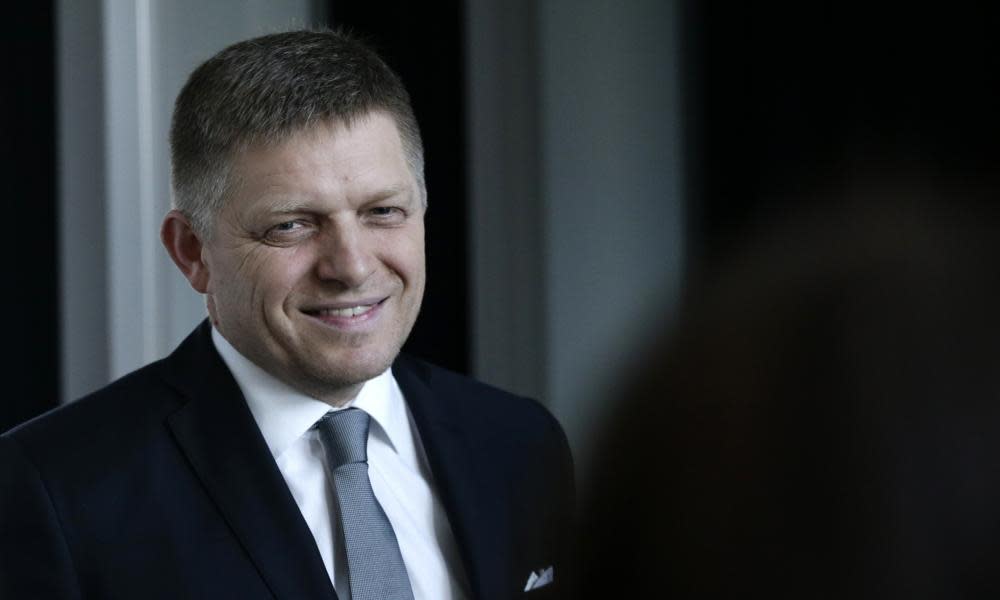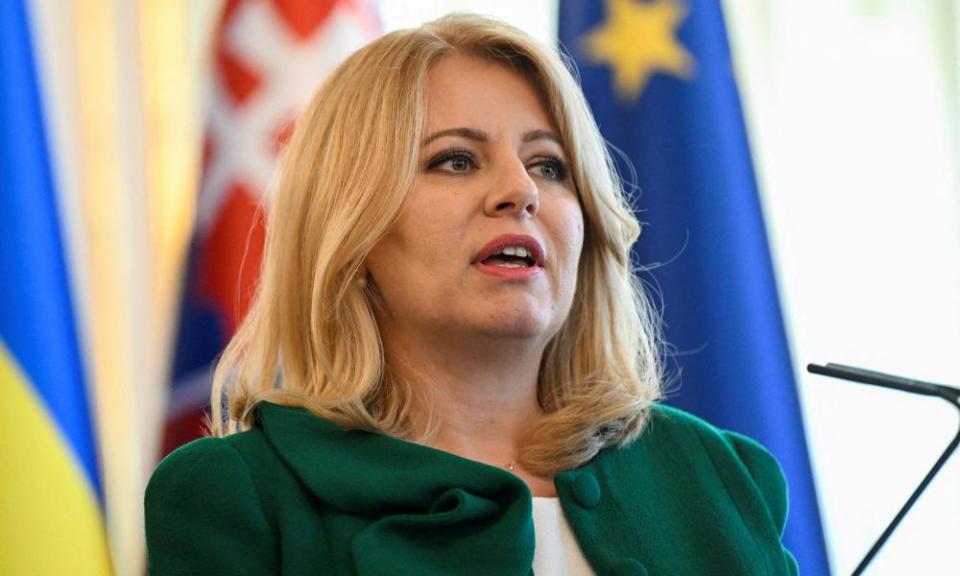With one stroke, Slovakia could soon become Russia’s newest ally

Slovakia matters far more than Europe realises. On 30 September, the small European country holds a parliamentary election that will have ramifications far beyond its borders. If the opinion polls are correct, it would mark the return of Robert Fico: a man who lavishes praises on Moscow and models himself on Viktor Orbán, the “alt-right” leader in neighbouring Hungary. The European Union and Nato could soon have a new troublemaker within.
When Russia invaded Ukraine in February 2022, Slovakia went all in to defend Ukrainian sovereignty. Per capita, it has been one of Kyiv’s staunchest backers, becoming the first Nato country to send fighter jets. If Fico is elected, it is in danger of doing a 180-degree turn and giving its support to Vladimir Putin.
Slovakia, a country of only 5 million people, is a testing ground for the power of propaganda. Last year, a former defence attache was caught red-handed offering money to a Slovak journalist to peddle Kremlin propaganda on the war in Ukraine and much more. When the video was released a year and a half ago by news outlet Denník N, it went viral and the diplomat was expelled.
The thinktank Globsec, which measures the political allegiances of former communist states and is part-funded by the US and the EU, publishes an annual Vulnerability Index. Its most recent survey makes for salutary reading, with Slovakia often the outlier. Dominika Hajdu, head of its Centre for Democracy and Resilience, says that 50% of Slovaks believe the US to be a security risk, a figure sharply up on just a few years ago, while only 40% of Slovaks believing Russia to be primarily responsible for the Ukraine war, the lowest percentage in central and eastern Europe.
A few years after the 1993 dissolution of Czechoslovakia, the newly independent Slovak state to the south was already a cause of concern to the west. While other post-communist states embraced liberal democracy with enthusiasm, the US secretary of state, Madeleine Albright, called it “the black hole” of the region. Nato membership was delayed. Eventually it did join, in 2004, the same year it also became part of the EU. The assumption then in both of these institutions was that Slovakia, finally, had a settled identity and a settled set of alliances.
Then came Fico, a prototype populist. As prime minister between 2006 and 2010 and then 2012 to 2018, he fulminated against the west for his domestic audience, but was careful not to go against the international status quo.
What happened next shook Slovakia to its core. Ján Kuciak, a young investigative journalist, was looking into corruption involving Fico’s government, EU subsidies and the Italian mafia. On 21 February 2018, Kuciak and his fiancee, Martina Kušnírová, an archaeologist, were gunned down by contract killers at their flat outside the capital.

In the biggest demonstrations since the Velvet Revolution that brought down communism in 1989, tens of thousands of Slovaks took to the streets to express their fury. Eventually, Fico and his entire cabinet were forced to resign – not before he accused the US billionaire George Soros of fomenting the protests.
Hope arose from the horror. In June 2019, an environmental activist and lawyer, Zuzana Čaputová, sensationally won the presidential election. Months later a new government was voted in, presaging change. Within weeks of taking office, however, the pandemic began, and so did its troubles. Slovakia has had four prime ministers in the past four years. Successive coalitions have come and gone, struggling to cope with Covid, inflation, the energy crisis and the war. The last administration collapsed in December amid much infighting, and the country has been treading water since.
Related: Slovakian president Čaputová says she will not run for re-election
Cue a remarkable return for Fico. In a copy of Orbán, he spent the time in opposition moving further to the right, denouncing “Ukrainian fascists” and railing against the decision by the Slovak government to ship whatever weapons it had to Ukraine. He then called Čaputová an “American agent” and, in an echo of Donald Trump, has described recent arrests of senior intelligence chiefs as a “police-led coup”. It has been reported there are up to 2,000 Facebook pages sharing anti-western propaganda, with Čaputová warning of an “information storm” of political denunciations from the right, supported by Russia. Ominously, she has had enough and will not stand for a second term.
Fico’s party, Smer-SD, is ahead of the other parties in the polls. I spent an hour with its vice-chair, sitting on a terrace outside parliament. Ľuboš Blaha frames Russia’s conflict with the west less in military terms and more as a culture war. “We see it as a proxy war of the United States against Russia on Ukrainian land,” he says. “The issue isn’t about Russia and democracy. It is about Russia protecting their cultural, national identity against this liberal mania in the west.”
As he speaks, I look across the Danube to the forest that marks Austria ahead. I remember it from the 1980s: the heavily fortified border just a few kilometres away, the iron curtain, which imprisoned generations of Czechoslovaks.
The danger is ever-present, but there is still much to play for. Election campaigns in Slovakia have often produced dramatic last-minute swings and a complicated voting system will make coalition building complex. What is beyond doubt, however, is that Fico is a major player once again and the politics he espouses is back in fashion. It is a measure of how messy politics has become, and how much faith in liberal democracy has been eroded here in the heart of Europe.
John Kampfner’s documentary Slovakia Divided is available on BBC Sounds

 Yahoo News
Yahoo News 
